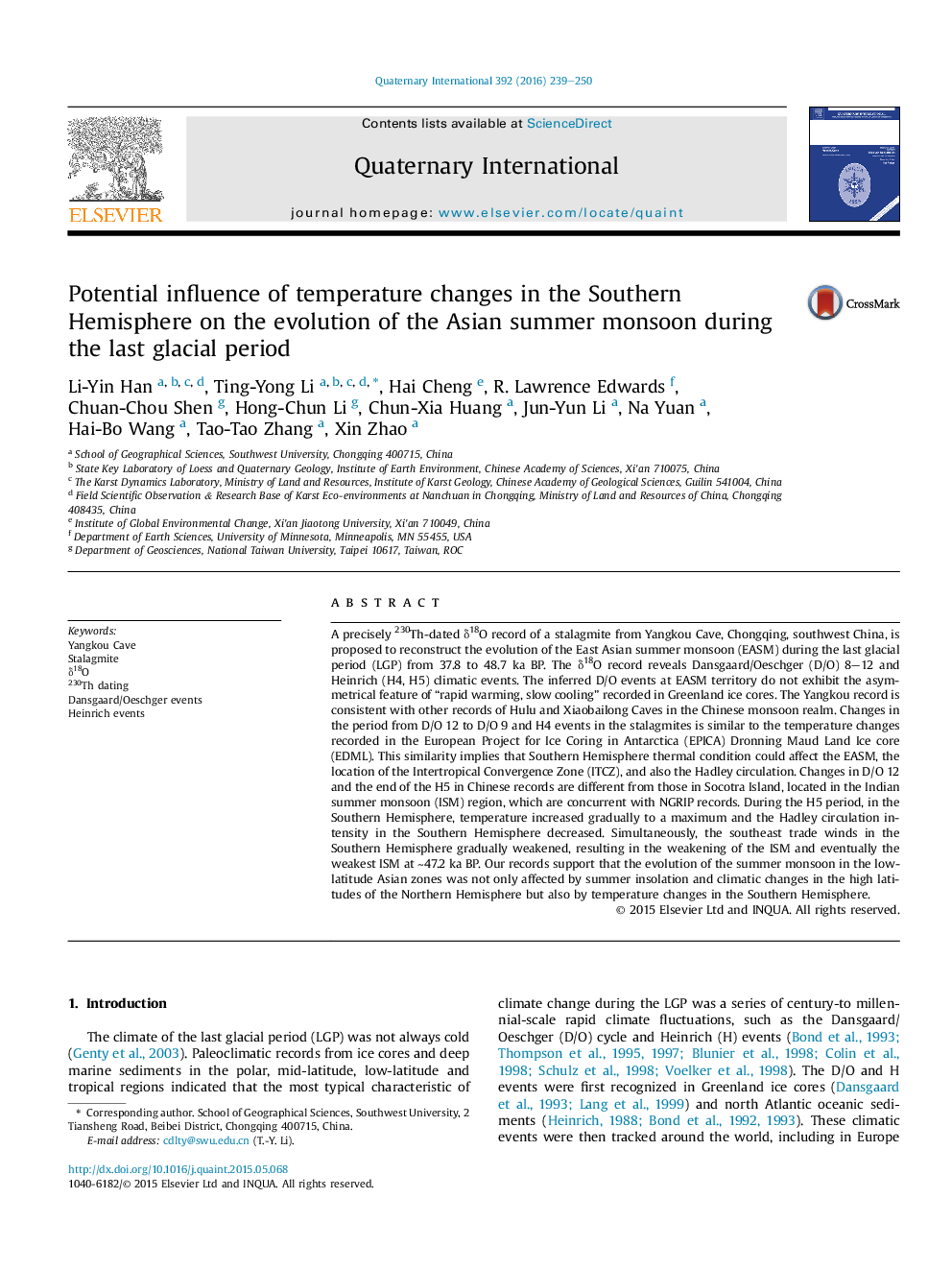| کد مقاله | کد نشریه | سال انتشار | مقاله انگلیسی | نسخه تمام متن |
|---|---|---|---|---|
| 1040402 | 1484106 | 2016 | 12 صفحه PDF | دانلود رایگان |
A precisely 230Th-dated δ18O record of a stalagmite from Yangkou Cave, Chongqing, southwest China, is proposed to reconstruct the evolution of the East Asian summer monsoon (EASM) during the last glacial period (LGP) from 37.8 to 48.7 ka BP. The δ18O record reveals Dansgaard/Oeschger (D/O) 8–12 and Heinrich (H4, H5) climatic events. The inferred D/O events at EASM territory do not exhibit the asymmetrical feature of “rapid warming, slow cooling” recorded in Greenland ice cores. The Yangkou record is consistent with other records of Hulu and Xiaobailong Caves in the Chinese monsoon realm. Changes in the period from D/O 12 to D/O 9 and H4 events in the stalagmites is similar to the temperature changes recorded in the European Project for Ice Coring in Antarctica (EPICA) Dronning Maud Land Ice core (EDML). This similarity implies that Southern Hemisphere thermal condition could affect the EASM, the location of the Intertropical Convergence Zone (ITCZ), and also the Hadley circulation. Changes in D/O 12 and the end of the H5 in Chinese records are different from those in Socotra Island, located in the Indian summer monsoon (ISM) region, which are concurrent with NGRIP records. During the H5 period, in the Southern Hemisphere, temperature increased gradually to a maximum and the Hadley circulation intensity in the Southern Hemisphere decreased. Simultaneously, the southeast trade winds in the Southern Hemisphere gradually weakened, resulting in the weakening of the ISM and eventually the weakest ISM at ∼47.2 ka BP. Our records support that the evolution of the summer monsoon in the low-latitude Asian zones was not only affected by summer insolation and climatic changes in the high latitudes of the Northern Hemisphere but also by temperature changes in the Southern Hemisphere.
Journal: Quaternary International - Volume 392, 21 January 2016, Pages 239–250
